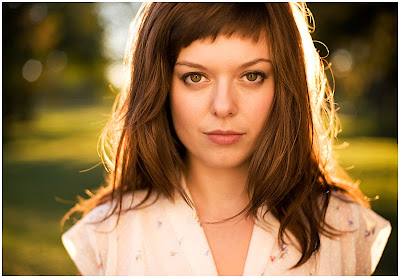Lighting is an essential building block of photography. Learning how to use light to your advantage can transform an ordinary photo into an extraordinary one. Many photographers begin their journey working with natural light and I firmly believe this is is a great place to start. But depending on the circumstance, artificial light may be needed.
When it comes to artificial light, there are many options to choose from. Speedlights, strobe lights and continuous lights are all at your disposal, not to mention the various light modifiers. But while it’s nice to have this variety, trying to work out which light source is best for your shoot can become overwhelming.

The Difference Between Speedlights, Strobe Lights and Continuous Lights
 Speedlights are portable, battery operated lights that can attach to most cameras through the hot shoe mount. They can also be used off-camera by attaching them to a light stand and then activating them via wireless triggers.
Speedlights are portable, battery operated lights that can attach to most cameras through the hot shoe mount. They can also be used off-camera by attaching them to a light stand and then activating them via wireless triggers.
Strobes are larger (and typically more powerful) lights that are attached to light stands and activated through wireless triggers. Both speedlights and strobe lights emit a powerful burst of light when fired.
Continuous lights emit light the entire time you have them on. Years ago these lights were commonly used in video production. After using them they’d be physically hot, and you had to wear special gloves to break them down. (I remember those days.)
Thankfully, continuous lights are now more powerful, more portable, and cool to the touch.
When to Use Continuous Lights

Continuous lights are often overlooked in the world of photography. But sometimes they’re the best choice. If you’re an event photographer, you may find yourself shooting in a venue that doesn’t allow flash photography. In these cases, continuous lights may be permitted. Even if flash photography is allowed, you may still opt for continuous lights to avoid being a distraction. If it’s a sensitive event, setting continuous lights and leaving them on may be a better option.
Continuous lights are also a viable option for portrait photography, especially for beginners. When using strobe lights, you can’t truly evaluate your lighting situation until they’re fired. Because of this, they often take more time to set up and adjust. (You need to keep taking photos of your subject and adjusting the lights until they’re right.)
With continuous lights, you can see the lighting situation in real time, which helps you learn to see the best lighting situations and achieve your aesthetic goal. They generally emit an even stream of light onto your subject, allowing you to set them up once and then forget them.
And many strobe lights need a moment to power up between shoots. Those few seconds could bethe difference between a perfect shot and a mediocre one. If you’re taking photos of a subject that might move around a lot such as children or pets, continuous lights may be the answer.
Here are five photography tips to make using continuous lights easier and more effective.
1. Get stronger lights
Because of their design, continuous lights generally aren’t as powerful as strobe lights. To ensure you get a nice light source, opt for more powerful lights. I recommend an LED with at least 1000 bulbs. If it’s too strong, you can always dial it back. Better to have more than you need in these situations.
2. Soften the light

We want a soft light on our subject to avoid unwanted harsh shadows. Continuous lighting is no different. Use light modifiers to soften your light as much as possible, especially if you’re taking portraits. Whether you use softboxes or umbrellas is up to you. (I like using softboxes or scrims.)
3. Check the color temperature
Unlike most photography lights, some continuous lights let you change color temperature. In most cases you’ll want to make sure they’re set to daylight (around 5600k), which will give you the most natural look. Check your lights to make sure they’re set to the right color temperature.
4. Turn off all other available lighting
Because color temperature is so important, chances are the current lighting in the space will interfere and mix the color temperatures. Turn off all other light sources in the space to ensure the only light your camera is working with is the light you’ve provided.
5. Use a three-point light system
If you’re taking portrait, I suggest using a three-point light system, especially with continuous lights as they aren’t as powerful. The two front lights will be your key and fill, while the back light can serve as a hair light or be used to separate your subject from the background.
Ready to Try Continuous Lights?
I hope you consider using continuous lights next time you’re in the studio. The results may surprise you.
The post 5 Tips for Using Continuous Lights in Your Photography appeared first on Digital Photography School.

Digital Photography School




















 Speedlights are portable, battery operated lights that can attach to most cameras through the hot shoe mount. They can also be used off-camera by attaching them to a light stand and then activating them via wireless triggers.
Speedlights are portable, battery operated lights that can attach to most cameras through the hot shoe mount. They can also be used off-camera by attaching them to a light stand and then activating them via wireless triggers.







You must be logged in to post a comment.